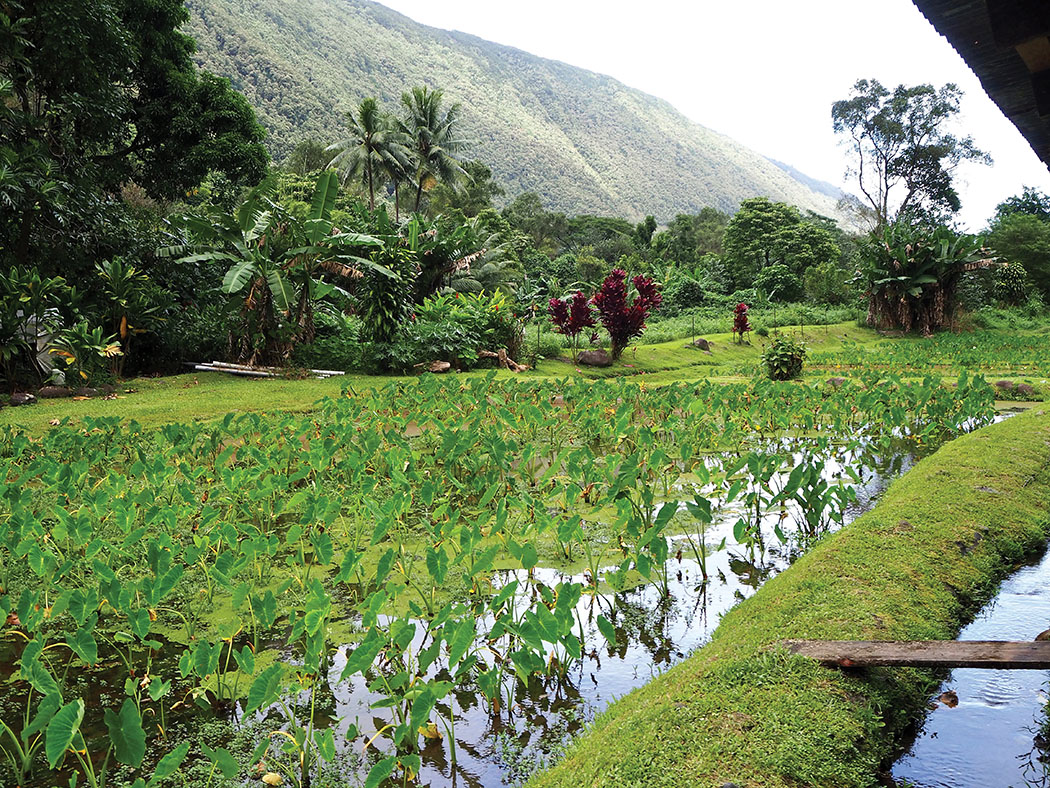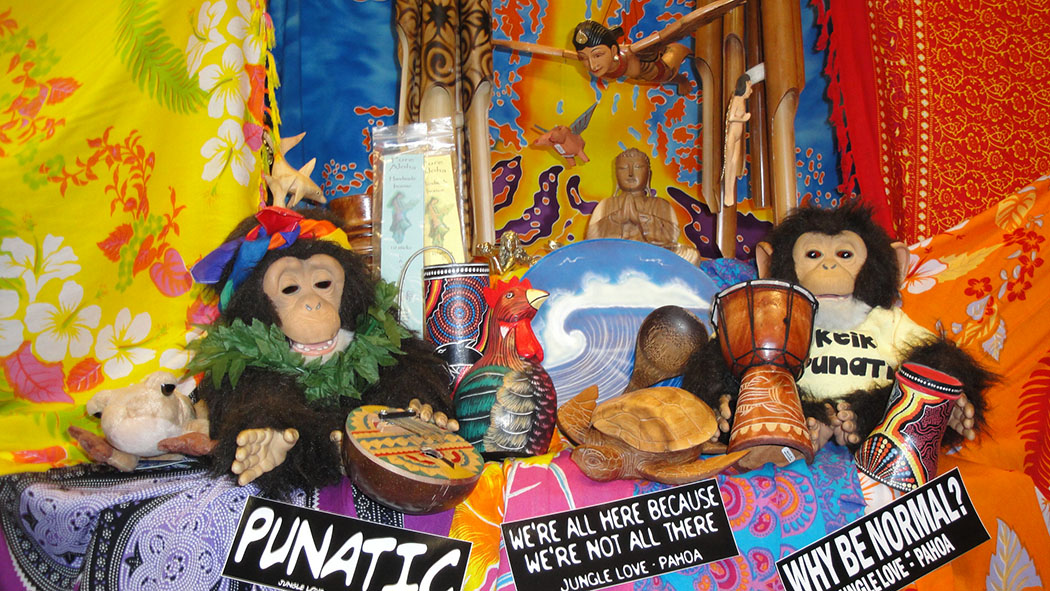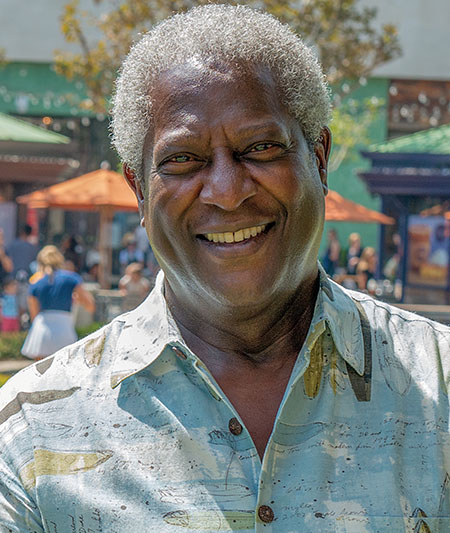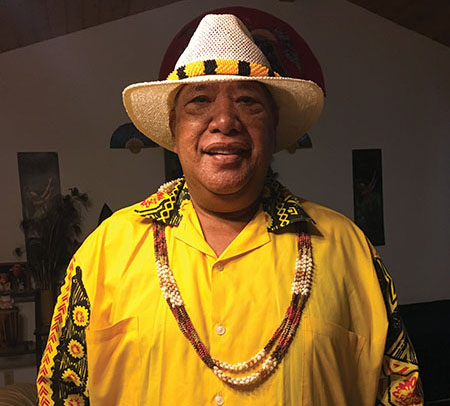
Kumu Kele Kanahele: A Unique Son of Ni‘ihau
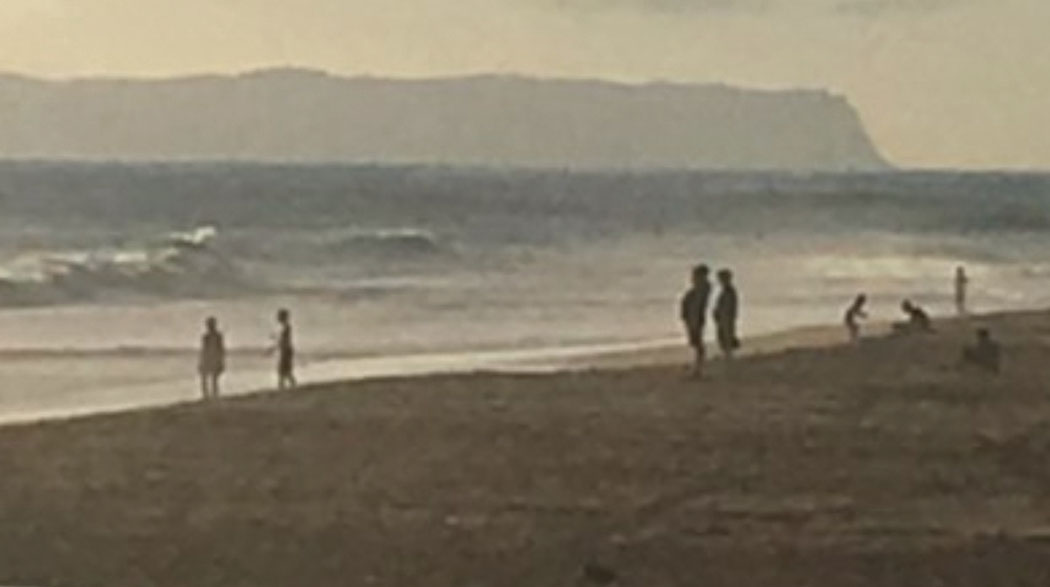
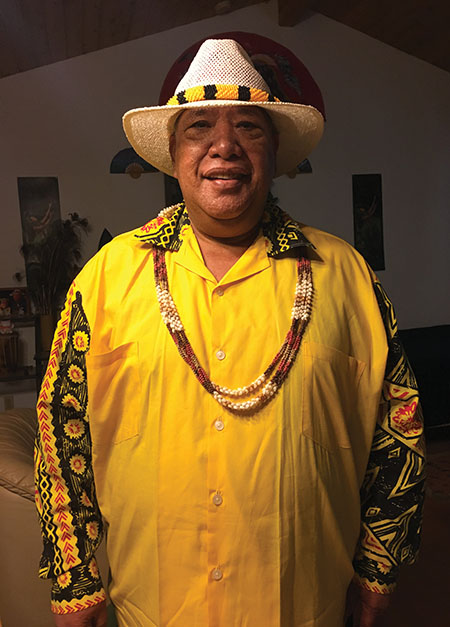
photo by Paula Thomas
By Paula Thomas
Tucked away in “the boonies,” as he calls it, is the tidy, unsuspecting home of one of Ni‘ihau’s sons, Kumu Kele Kanahele. Kumu Kele is famous for making prized necklaces, chokers, and earrings from the shells that wash ashore on the island of Ni‘ihau, also known as the Forbidden Island; shells he learned to collect as a young boy.
Kumu Kele is the oldest of nine children, only six of whom are still living, which makes him the first son of Donald and Annie Kanahele. Growing up on Ni‘ihau, his family home started small. As his father did carpentry, a room was added with each new child.
Raised by his parents and grandparents, Kumu Kele often moved between their households for much of his youth. Several times a week, his grandfather, Joseph Keoualani Kelley (hence “Kele”), would come on horseback to pick him up and take him to be with his grandmother, Ilealoha.
As Kumu Kele tells it, it was his grandmother who taught him about shell collecting while his grandfather taught him how to make the pukas (holes) and string the shells: “The kane kumu [male teacher] and wahine tutu [grandmother].” They were masters, and of all the children, only Kele expressed interest in learning from them when he was young, which is why he is Kumu Kele today.
Kumu Kele’s grandmother loved to ride horses, work with cattle, and fish. She loved the outdoors and had Kele outside all the time during the days he spent with her. They would get up as early as four in the morning, saddle up, and ride to the beach on horseback to watch the sun rise. Kumu Kele spent his time at the beach collecting the precious Ni‘ihau shells, combing through the sand with his hand as the waves washed up, working in rhythm with the water, while his grandmother would throw lines out and fish.
The Precious Ni‘ihau Shells

Two categories of shells comprise the materials for the valuable Ni‘ihau jewelry: the tiny, nub-like kahelelani shells that come in a rainbow of colors, and the momi shells that are white, brown, or patterned. Polished cowry shells, more common and more varied, are sometimes used around the clasp.
While kahelelani, momi, and cowry shells wash up on other shores around the islands (on Maui, Moloka‘i, and Kona beaches on Hawai‘i Island) they are not Ni‘ihau shells. “My friend told me some Ni‘ihau shells washed up on Moloka‘i,” explains Kumu Kele. “But I told him, ‘Then they are not Ni‘ihau shells. They are Moloka‘i shells.’”
That is why you’ll often see the source of the shells listed on a tag with the necklace. Only the shells from Ni‘ihau carry a high value and are worth much more than the shells found on other islands. Former Governor Linda Lingle signed a bill in 2004 to protect Ni‘ihau shells and lei makers from counterfeiters to protect their value and thus the livelihood of Ni‘ihau families.
About Ni‘ihau
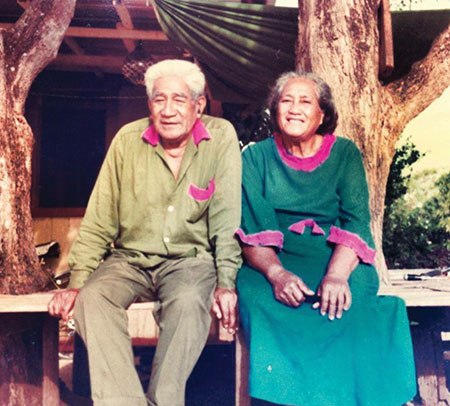
Ni‘ihau is hot and dry, and much of the island is treeless. About 17 miles southwest of Kaua‘i, it is approximately 70 square miles of mostly flat island. Collecting shells can be brutal on the skin and body. Kumu Kele shares, “I always wore a big hat, long sleeves, and sunglasses. It gets hot!”
Ni‘ihau is “forbidden” because it is a private island now owned by Keith and Bruce Robinson, descendants of the Robinsons and the Sinclairs who came from New Zealand in the late 1800s. Elizabeth Sinclair bought the island from King Kamehameha V for $10,000 in 1884 to raise cattle and sheep. Aubrey Robinson, her grandson, closed the island to visitors in 1915 (according to Wikipedia).
Today, about 80% of the income on the island comes from the US Navy installation. Islanders earn the remaining 20% from shell and jewelry sales. At the 2010 census, the population of Ni‘ihau numbered 170. More recent estimates are lower, although Kumu Kele thinks more people live there than are recorded.
Population is controlled because access to the island is restricted to outsiders unless they are invited by the Robinson family or by one of the 70 full-time Native Hawaiian residents. Women cannot bring men back to the island, according to Kumu Kele. Ni‘ihau men, however, can bring non-Ni‘ihau-born women back to the island to live. Policies and practices on Ni‘ihau, as prescribed by the Robinsons, are aimed at preserving the Hawaiian culture and practices, the local dialect, and the way of life.
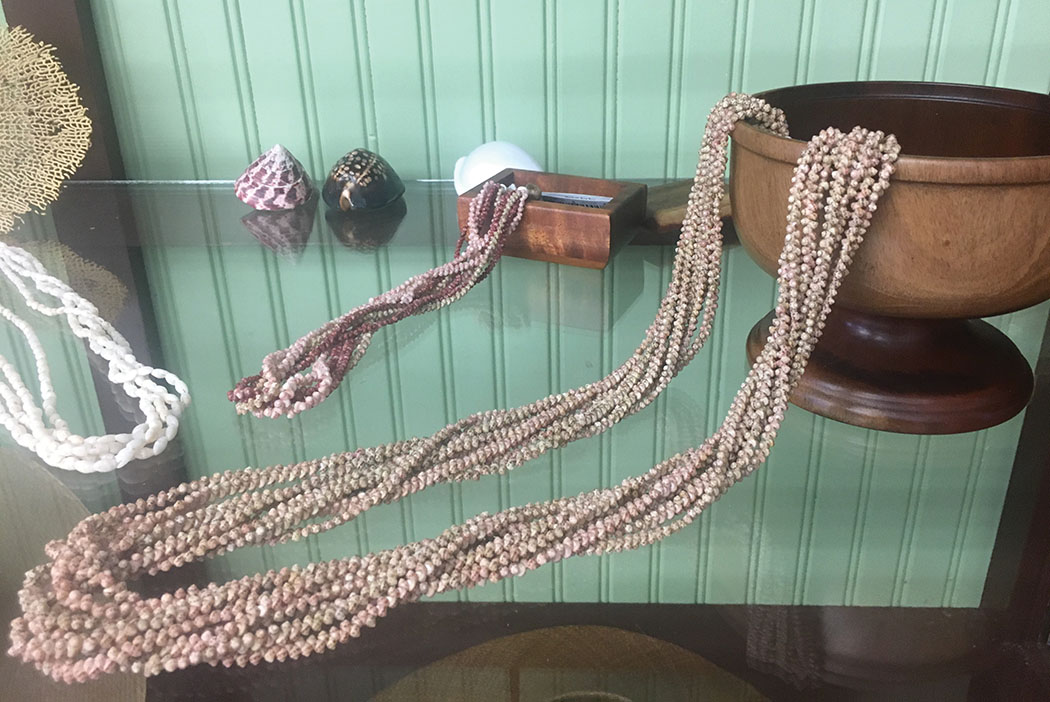
The Art of Collecting
Ni‘ihau shells wash ashore on particular beaches on island. Collectors know which beaches to go to for which particular shells, and what season of the year to harvest. Collecting is done by hand and can be, at times, a race or a dance with the waves.
“Sometimes the [momi] shells would be in long lines, one after the other, and you would have to work fast to scoop them up, otherwise the waves would take them back,” Kumu Kele says as he gestures gracefully with his hand. “Other times, the shells would be buried deeper in the sand and you have to scoop down with your hand to get them.”
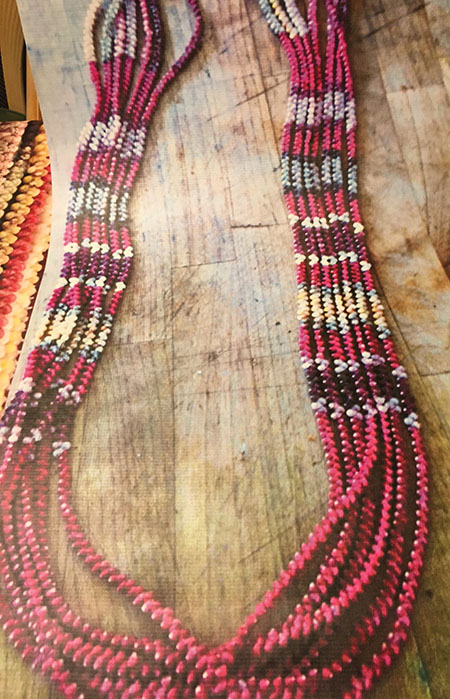
In the moments when a handful of rare shells would come up in his palm, Kele remembers getting emotional. “The first thing I would do is look up and thank God,” he says. “It was a good day.”
Collecting shells is hit or miss. There are days of nothing and there are days of great colors. Finding the rarer shells, the dark blue (uliuli) or honey-gold striped (kahakaha) momi or hot pink (‘ākala pua waipapipi) kahelelani shell is like finding treasure.
It can take five or more years to accumulate enough shells to make a necklace. Some of the rare shells are found on only one or two beaches and wash up only in the winter months. When you see these shells in a necklace, it is a sign of an expensive piece—in the thousands or tens of thousands of dollars.
The price of shell necklaces relates to how long the shells take to collect and how much time it takes the lei maker to create the piece. The rarer the shell, the longer it takes to collect enough to string, and the longer it takes to complete the necklace. The quality of a kahelelani shell lei is in the design, construction, and the finish versus how many shells are used.
This is why Kumu doesn’t know how many shells are in his necklaces. He concentrates on the design and follows a unique pattern from string to string. If he doesn’t have enough shells to finish a necklace, it will sit until the shells eventually are collected. He also takes time making the holes in the shells in just the right place so that shells align along a particular angle and therefore lie flat.
“This is one of my signature elements,” he explains. “And when I make a necklace, I break a lot of shells. A lot of them,” he reflects, a little balefully. “Nothing I can do about it.”
Styles for stringing include moana loa (single strand), double strand, or woven patterns. The patterned designs include poe poe (cylindrical), momi pikake (cascade-style), heleconia (two momi and a kahelelani in between), and kipona (a mix of momi in a cascade and strands of kahelelani). For Kumu Kele, a point of pride is when other shell lei makers compliment his design. He is not one to make the same necklace twice.
Making a Living
Kumu Kele makes his living buying and selling shells, making jewelry, and also offering lei-making workshops. For his workshops, where participants are going to make necklaces and earrings, he counts out the exact number of shells for each necklace and each pair of earrings, usually 250 for a necklace and 24 for two earrings. Workshops are offered wherever he is invited, locally and worldwide.
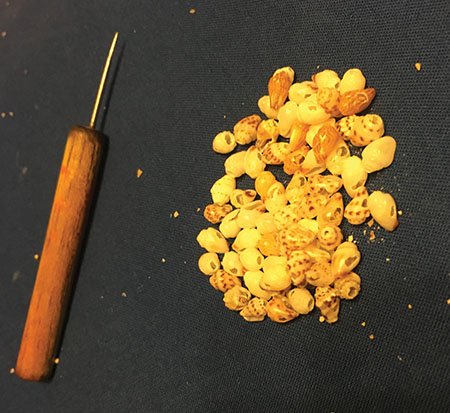
Kumu Kele uses to make the pukas (holes). photo by Paula Thomas
There was a time when Kumu Kele was the only one in his family who worked at jewelry making. Both surfing and jewelry making kept him busy before and after school. These days, his mother, who now lives on on Kaua‘i, his siblings, and his daughter are all in the business.
One of the reasons he moved to Hawai‘i Island in 1999 was to create a market for his necklaces that wouldn’t compete with relatives and friends on Kaua‘i. In the true spirit of ‘ohana, much of the proceeds of his sales go to taking care of his daughter and family on Ni‘ihau.
He travels to Kaua‘i regularly to shop for his ‘ohana and makes sure that his purchases get on the barge from Kaua‘i to Ni‘ihau once a month. If he misses a barge run, it could mean his daughter is out of water or other needed supplies.
Kumu Kele’s work can be purchased in two galleries on Hawai‘i Island: Hana Hou in downtown Hilo and the Gallery of Great Things in Waimea. Beyond that, he makes his jewelry by request and through word of mouth. His creations, after all, depend on the shells he has available, so certain things are in the hands of Mother Nature. Kumu Kele says he wouldn’t have it any other way. ❖
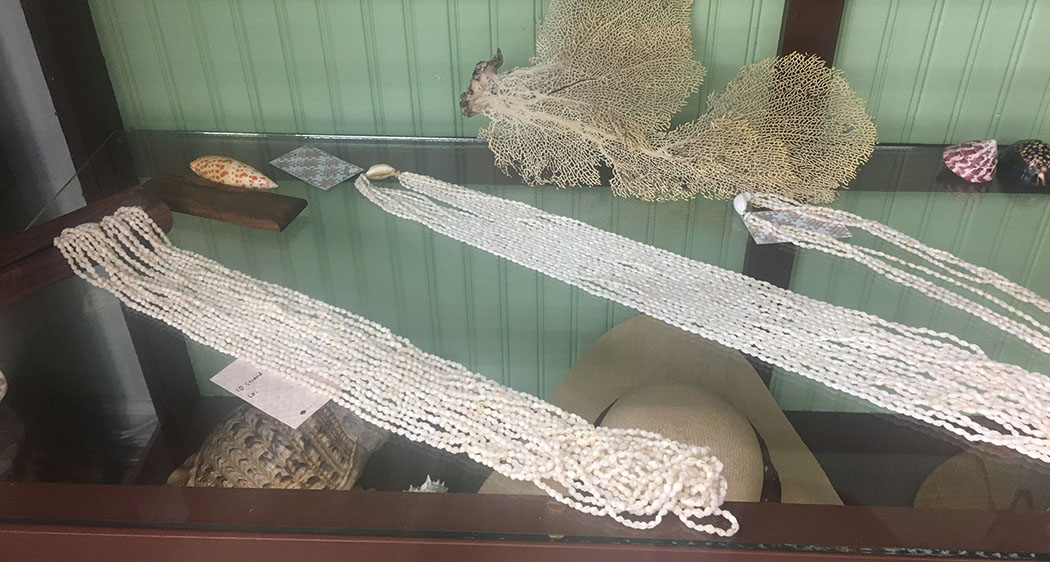
For more information: Kumu Kele 808.987.1859
